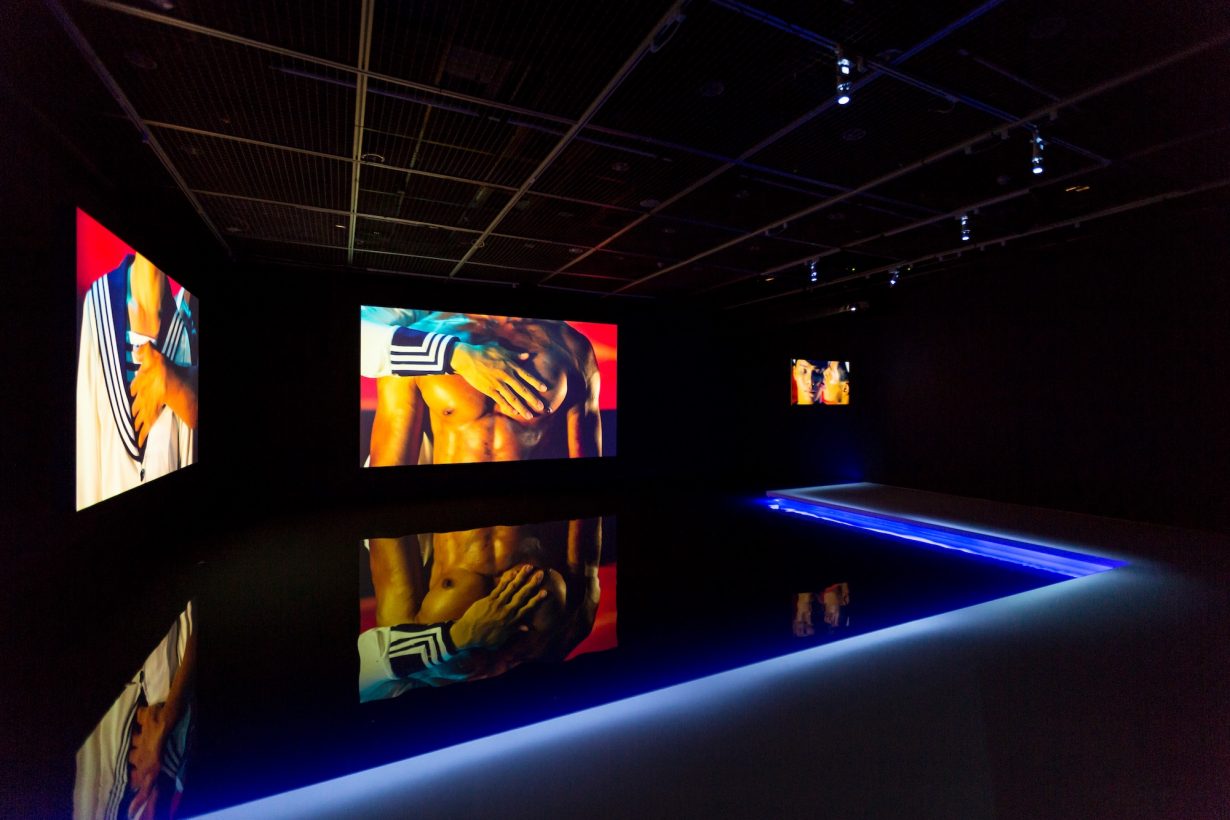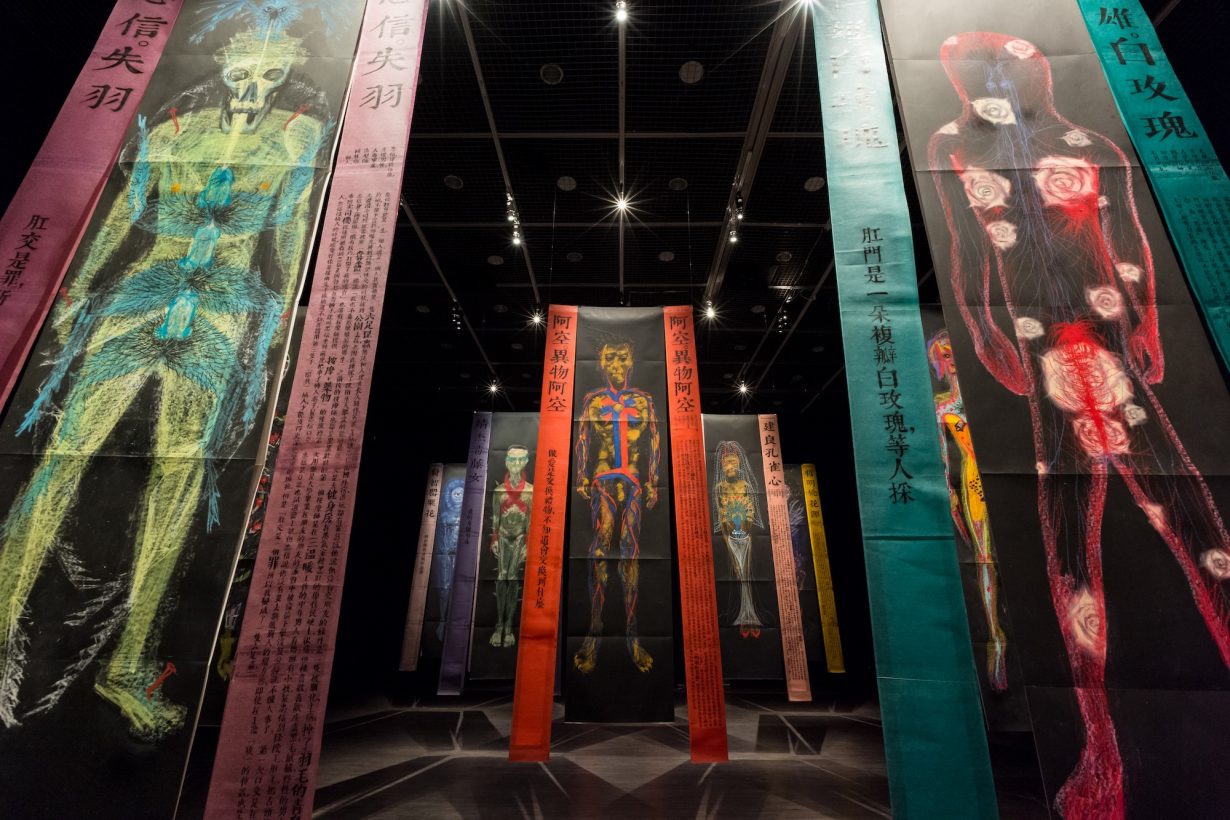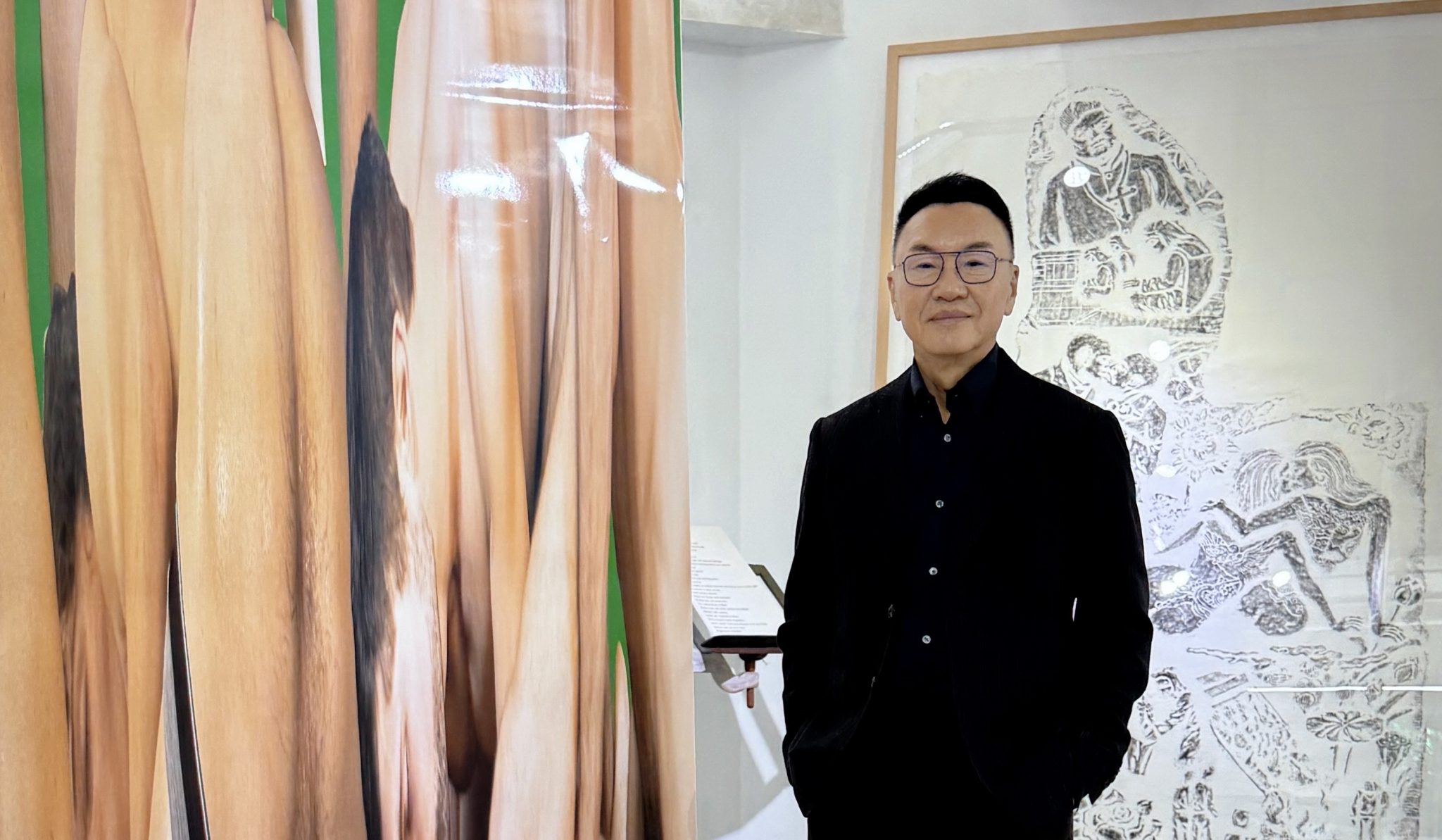Hong Kong property developer Patrick Sun began collecting traditional Chinese paintings during the 1980s. Trips to museums and galleries to see contemporary art attuned him to artwork that felt more relevant to his own life, and he soon began collecting contemporary art, but with the aim for the works to be publicly exhibited. He established the Sunpride Foundation in 2014; the foundation collects artworks of all media with a focus on LGBTQI+ artists and queer-themed works, with around 300 works by over 100 artists from Asia and the Asian diaspora. Working with institutions across Asia, Sun makes the foundation’s collection available as the starting point for largescale group exhibitions in public institutions, such as the Spectrosynthesis series that has so far taken place in Taipei, Bangkok and Hong Kong, with curators at each collaborating institution shaping the show in new ways that respond to each context, and in some cases eliciting the foundation to commission new works. With the aim of raising awareness and tolerance of queer issues in Asia, the foundation has recently expanded its scope to collect some non-Asian artists, including Mark Bradford and Zanele Muholi. As rights and social acceptance of gay life shift across different parts of Asia, Sun attempts to stage his own cultural advocacy, with the next iteration of Spectrosynthesis to take place in Art Sonje Center in Seoul in 2026.

ArtReview What is Sunpride’s mission and why did you set it up?
Patrick Sun Our mission is to foster a stronger, healthier, more equitable world for the LGBTQ community through the collection and exhibition of art. To put it in a simpler way, it’s about raising awareness and respect, hopefully, through what we do.
AR Was there a particular moment that you could say you stopped being ‘just’ a collector and started becoming a collector with a mission?
PS I started off collecting traditional Chinese painting, but my interests changed. I realised that these traditional paintings had very little to do with my life. After travelling and going to museums all the time with my partner, Sean, I realised that contemporary art did, and so I decided to merge my two passions together. One is contemporary art, and the other is my support for the queer community. I wanted to do it with a focus, to do exhibitions and collect for the shows, and I try as much as possible to work within those parameters.
AR Do you still have your collection of traditional art?
PS Yes, I still have some of it. There’s one particular painting that I’m very fond of: a long vertical scroll depicting two little boys hiding in a corner, enjoying a watermelon, as if it were forbidden fruit. I think that work portends my subsequent collection of queer art. It’s about a different kind of value than just the economic one.
AR When you say ‘contemporary art’, what does ‘contemporary’ mean to you?
PS We have this painting from the late Qing dynasty, showing a rather unusual combination of two men sitting in a family hall. Of course, you could say that they are brothers. But the interesting fact is that they have these male servants all around them; there’s not a single woman in that painting, which dates back more than 100 years. That was never picked for exhibition, but is as far back as we go in the collection. Which is to say that it goes beyond living artists; we try also to dig up older masters who were out and comfortable about their sexuality. People working at a time when it was much more difficult to be out. When I say ‘out’ I don’t mean that as a matter of hearsay, but with regard to artists who documented their sexuality. Artists like Bhupen Khakhar, from India; Shiy De-Jinn from Taiwan; T’ang Haywen, from Hong Kong, who lived in Paris. They are important. These are artists that we know identified as part of the lgbtq community. I think they help us root our exhibitions in a way that anchors the shows; just like Shiy anchored the 2017 show in Taiwan and Khakhar, in my view, anchored the 2023 show in Hong Kong. I think that is important, to form the basis of where we’re coming from.
AR The foundation’s stated mission is to foster a stronger, healthier, more equitable world for the LGBTQI+ community. Why choose art as the vehicle with which to drive this forward?
PS That question has many facets to it. First of all, art is usually considered something very elitist. With our shows, I think the key word is ‘accessibility’; we want to make sure that a show reaches out not just to the queer community, but hopefully to the general public. That’s the reason we anchor our show at public institutions like MOCA Taipei or BACC in Bangkok or Tai Kwun in Hong Kong.
But to answer the question more directly, I think maybe art chose me. I wish I could write novels. I wish I was a good actor. I wish I could make movies or be a more diligent activist or support the gay movement more. I’m comfortable with what I’m doing: I enjoy art. It’s just sort of come naturally to me. Even in the artworld, I have to say that I’ve been very lucky. Most people have been very nice and helped, one way or the other, open doors for me.

AR There are some countries where you simply couldn’t show the collection at all. I wonder how you think art could change anything in those places, such as in some Islamic countries.
PS Yes, occasionally you will still meet someone who is, maybe for religious reasons or maybe their cultural upbringing, not as friendly as one would imagine. There have been some commercial galleries, where I have been very honest about what we collect, and they would just turn 180 degrees around and walk away from me.
But I’m forever an optimist, and I have reason to be so. Even just a few years back, there were fewer countries that would have legal protections for queer people. Think of Singapore, or India, right? In fact, when I Google the gay-friendly countries in Asia today, names like Indonesia and China come up. Talk about different perspectives. In some countries, there’s still censorship; we have to deal with different aspects of the queer subject. Being an optimist, I believe that while we still have a lot of work to do, there are many countries in Asia where art shows like ours could help create a platform for communication.
AR How much are you committed to going into those territories where it’s difficult?
PS We try our very best. I know that with some places it would be illegal, and I’m not going to do anything that would put my team at risk. We have been approached by countries like Indonesia, and they say, ‘Oh, you cannot do it in Jakarta, but in Bali…’ Even in Hong Kong, or Thailand or Taiwan, which are generally perceived as very tolerant societies, we still have discrimination with job opportunities and social entitlements. There are reasons for bringing those shows to even these supposedly very liberal countries, just as much as there are in some less liberal countries. There is a lot of work to do.
AR While you’re supporting this mission through art, are you also doing it in other ways, too?
PS Definitely, which is why when we collaborate with any institution we would ask them about the educational programme. We rely on the institutions to help us in that area, but it is definitely important.
AR How much does personal taste play into what Sunpride does?
PS I try not to have too much personal influence. Inevitably there will be, but there are lots of works that I wouldn’t choose were it not for the need to include it in an exhibition. On the other hand, we also recently started to collect non-Asian queer artists: those are more personal, and are hanging in my office. I enjoy looking at them, seeing them every day.
AR Does everything you collect come into the collection with an exhibition in mind?
PS We have all these Asian countries in mind where we’d like to stage exhibitions. We hope that eventually we’ll take works to Bangladesh, to Indonesia, Malaysia and China. But it’s hard to really predict what’s going to be shown, because ultimately it is the curator’s decision. What we do is we present our works like a basket of goods, as something to build a show on. There’s never a prerequisite as to how many pieces should be in the show, but it’s something that they could work with.
AR How do you identify LGBTQI+ artists for the collection? Is it to do with the artworks and the subject matter, or is it to do with the artists themselves, or sometimes both?
PS Of course, queer and gay artists, lesbian and transgender artists, they would definitely fall into our focus. On the other hand, we also have straight artists doing queer-themed work. For example, we have a work by Cai Guo-Qiang, who is not in the community, but he was commissioned to do a work in New York after 9/11, and it was an ink rubbing of a sculpture that appears to include scenes of gay marriage. We also have one work by Yue Minjun, a Chinese artist. He did a portrait of Leslie Cheung and his boyfriend, Daffy Tong. Instead of painting their faces, he put two flowers that are not supposed to bloom together. I don’t necessarily label anybody according to their participation in our collection or in our exhibitions.

AR Sometimes it might not be about how you label them but about how other people label them. Have there ever been artists who said, “I don’t want to be in your collection because I’m not out”?
PS I had one artist who pulled out because he wasn’t comfortable taking part. He said that, as he lived in a very conservative country, he’d decided not to participate, which I totally respect. On the other hand, we have happy stories, too, a friend from Thailand who had never come out to his family. I was a little bit worried. Then he said his family came and saw his work in BACC, and they all understood him. That was very good. I always quote that example as something very positive that came out not just for the community but for the artist himself.
AR When you do an exhibition, how do you judge its success? Is it in terms of how many visitors you had, or other kinds of outcomes, like legislative outcomes, changing the artists that are being shown in spaces?
PS All of the above. Footfall is important. Media reporting is important. After all, we talk about visibility and awareness, right? Then there are artists who have participated in our shows who have been internationally noticed. For example Xiyadie, who has gone on to exhibit in Slovenia, America, Germany, and was included in last year’s Venice Biennale. I’m overjoyed to see his career blossom in this way. There are many ways to gauge success. One other way I feel successful is that I see more artists doing queer-themed work, like Dinh Q. Lê’s series on gay pornography. There are even straight artists who do queer-themed work; just painting a rainbow flag isn’t necessarily important, but I still see that as a good sign.
AR Some might say that every time you do one of these shows, and it’s successful, you also increase the value of the work that’s within your collection.
PS That was never our intention and never something that I would even think about. I honestly don’t do this for investment, so it’s irrelevant. It’s not the reason we do it. Someone once remarked to me, “Patrick, one day what you do will no longer be important.” He said he believed that eventually there would be equality achieved; then what we’re doing would no longer be relevant. I replied, “I can’t wait for that day to happen.” If my work is not important or my collection is worthless, that’s fine with me. That’s not what I started out to go for. Of course, people have pointed out that even if that day comes, what we do has historical relevance.
ArtReview’s May issue is accompanied by a standalone publication on philanthropy in the arts, with essays exploring funding models in North and South America, Africa, Europe and Asia, profiles of four prominent philanthropists and a guide to philanthropic initiatives around the world. This publication was created with the support of Sunpride Foundation
